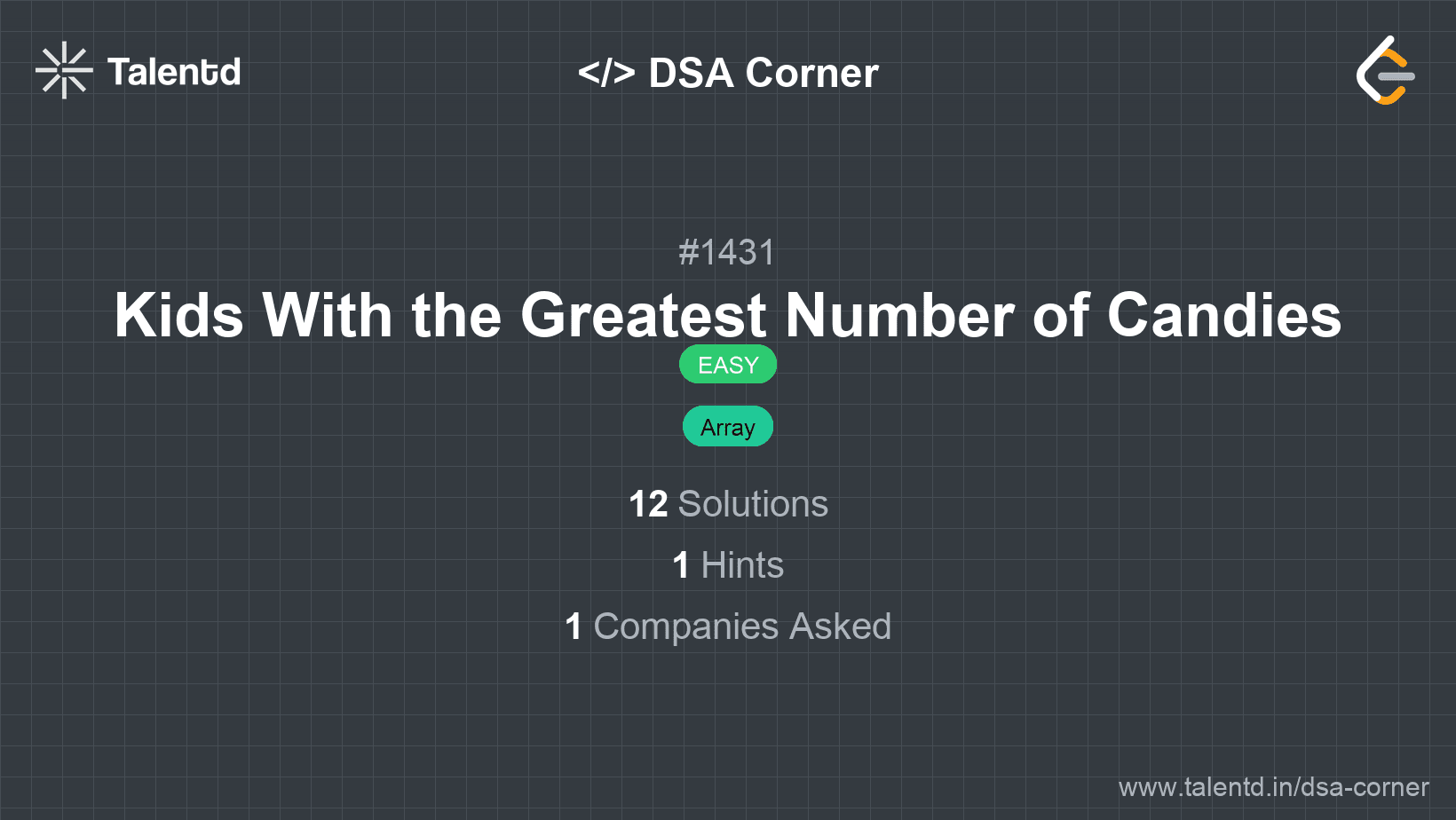
Sponsored
Sponsored
This approach iterates through each kid's candies and checks if adding the extraCandies to their current candies makes them equal to or greater than the maximum number of candies present initially. It involves finding the maximum candies first and then performing this computation.
Time Complexity: O(n), where n is the number of kids.
Space Complexity: O(1), not counting the output array.
1using System;
2using System.Collections.Generic;
3using System.Linq;
4
5public class Solution {
6 public IList<bool> KidsWithCandies(int[] candies, int extraCandies) {
7 int maxCandies = candies.Max();
8 List<bool> result = new List<bool>();
9 foreach (int candy in candies) {
10 result.Add(candy + extraCandies >= maxCandies);
11 }
12 return result;
13 }
14}The approach uses LINQ to find the maximum number of candies in the initial list, then constructs the result list using a foreach loop by comparing each kid's candies plus extra candies to the maximum.
This approach optimizes the process by combining the finding of the max candies and constructing the result array into a single pass by keeping track of the maximum with conditional updates.
Time Complexity: O(n)
Space Complexity: O(1) aside from the result.
1
This Java solution first computes the maximum number of candies and directly builds the result list by evaluating each candy count with added extraCandies in a second loop, achieving a one-pass calculation result.